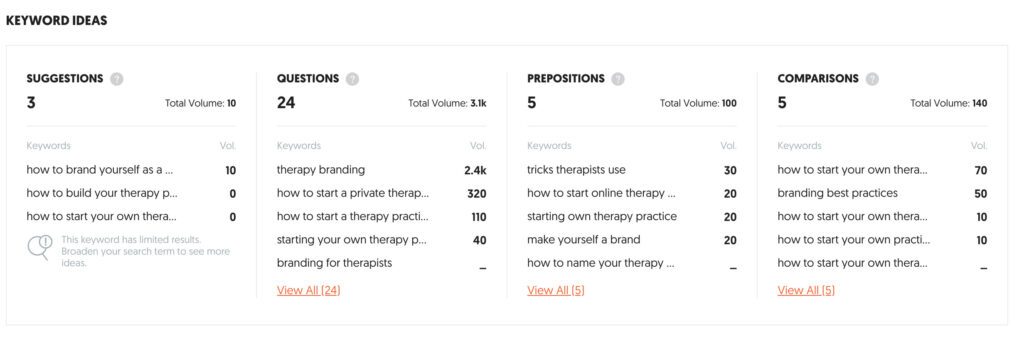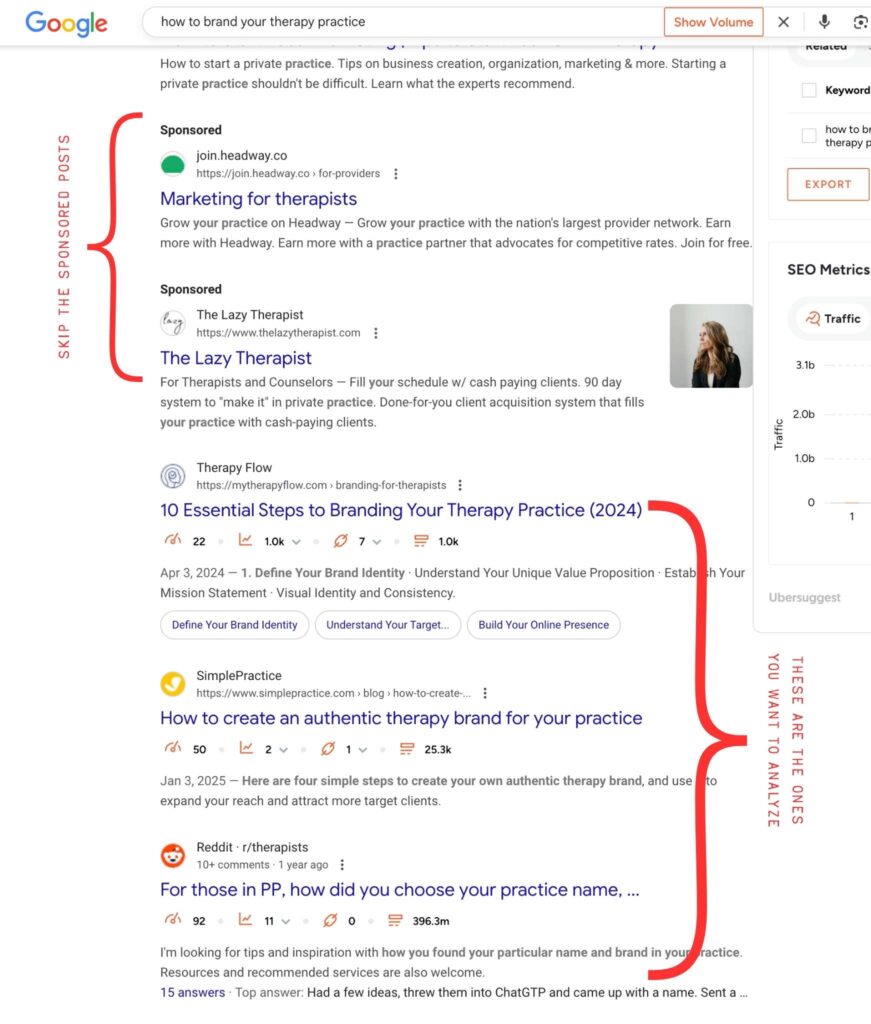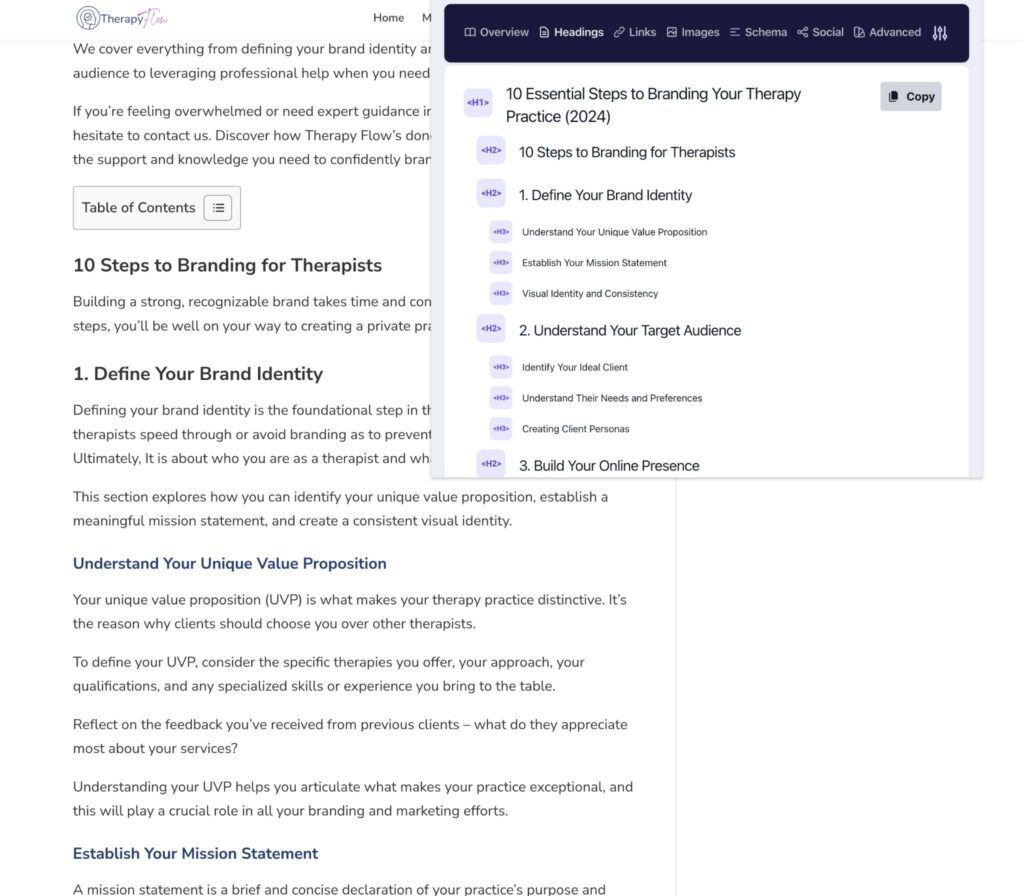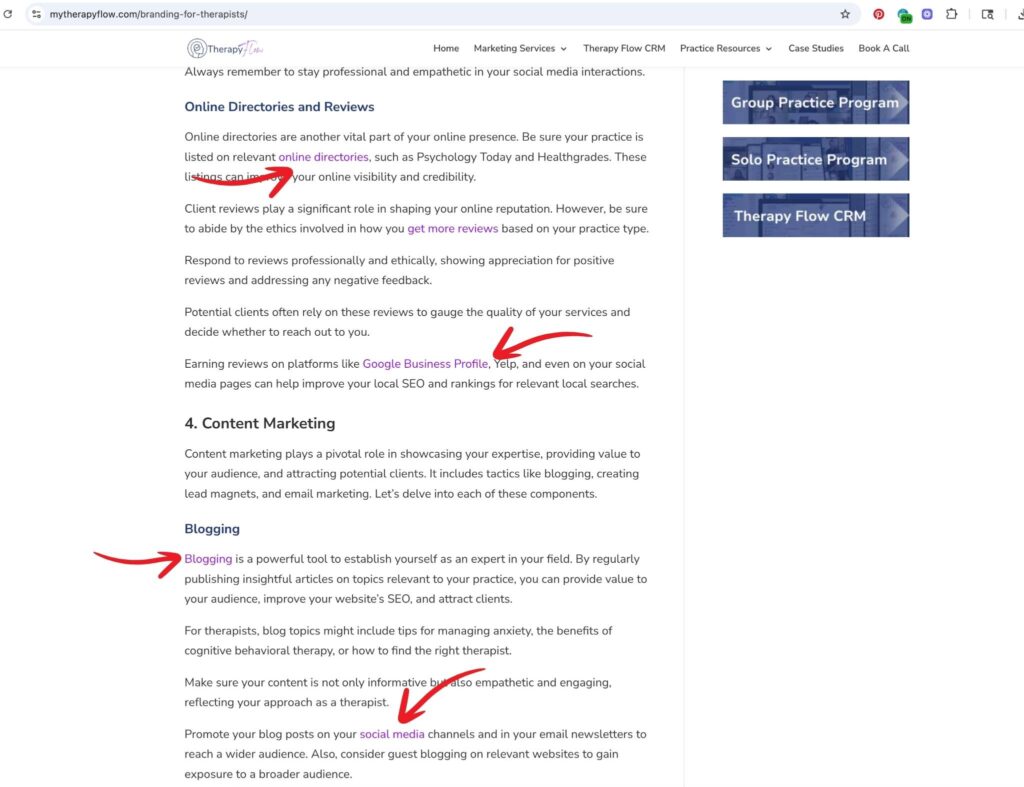- Not All Blogging Is Good Blogging. Here's How To Blog For SEO:
- Step 1: Start With Real Keyword + Topic Research
- Step 2: Analyze the Competition With SEO Tools
- Step 3: Structure Your Blog for Google and Humans
- Step 4: Optimize for SEO — Everywhere
- Step 5: Add Internal + External Links
- Step 6: Add Helpful Visuals + Enhance User Experience
- Step 7: Add an FAQ Section Based on Real Questions
- Step 8: Submit Your Post to Google Search Console
- Your Blogging SEO Checklist
- Final Thoughts: Be the Best Resource, Not Just Another Blog
-
Frequently Asked Questions About Blogging for SEO
- How do I choose the right blog topics for SEO?
- What blog length does Google prefer?
- How often should I publish blog posts for SEO?
- Can I update old blog posts to improve SEO?
- What’s more important: keywords or user experience?
- What is EEAT and why does it matter for blogging?
- Should I use a plugin like Yoast or RankMath for SEO?
- Does every blog post need to target a keyword?
- Not All Blogging Is Good Blogging. Here's How To Blog For SEO:
- Step 1: Start With Real Keyword + Topic Research
- Step 2: Analyze the Competition With SEO Tools
- Step 3: Structure Your Blog for Google and Humans
- Step 4: Optimize for SEO — Everywhere
- Step 5: Add Internal + External Links
- Step 6: Add Helpful Visuals + Enhance User Experience
- Step 7: Add an FAQ Section Based on Real Questions
- Step 8: Submit Your Post to Google Search Console
- Your Blogging SEO Checklist
- Final Thoughts: Be the Best Resource, Not Just Another Blog
-
Frequently Asked Questions About Blogging for SEO
- How do I choose the right blog topics for SEO?
- What blog length does Google prefer?
- How often should I publish blog posts for SEO?
- Can I update old blog posts to improve SEO?
- What’s more important: keywords or user experience?
- What is EEAT and why does it matter for blogging?
- Should I use a plugin like Yoast or RankMath for SEO?
- Does every blog post need to target a keyword?
Learning how to blog for SEO is one of the best things you can do for long-term visibility and growth. But here’s the hard truth: most blog posts are more or less ignored by Google.
Before we dive in, allow me to introduce myself: I’m Jordin, founder of Unica Formo, a brand and web design studio that specializes in strategic design and SEO for service-based business owners. I’ve written, optimized, and ranked content across multiple niches—and I’ve seen firsthand what works (and what doesn’t).
In this guide, I’m breaking down how to blog so Google actually shares your content. Because unless you’re creating high-quality content that’s structured for SEO, your blog posts might be a total waste of time (at least from an SEO perspective).
We’re going to cover:
- Why not all blogging helps SEO
- How to find the right blog topics using real data
- SEO structure and formatting tips based on Google’s preferences
- A checklist to follow for every blog post you write
- Tools to help you rank higher, faster
Not All Blogging Is Good Blogging. Here’s How To Blog For SEO:
Consistency alone doesn’t help if you’re consistently putting out average content.
Here’s why most blog posts don’t rank:
- They repeat what’s already out there
- They’re too short, vague, or fluffy
- They aren’t structured properly for SEO
- They don’t answer real questions people are searching
Google is in the business of serving the best answers to searchers—not just new ones. So if your post isn’t better than the top 3-5 results for a keyword, you’re unlikely to rank.
Step 1: Start With Real Keyword + Topic Research
Before you write anything, start by finding what your audience is already searching for.
Tools to Use:
- AnswerThePublic.com: Shows questions people are asking in real time
- Google Keyword Planner (free with a Google Ads account)
- Google search autofill + “People also ask”
- Ubersuggest (you get 3 free searches a day!)
- Semrush or Ahrefs (if you have a paid account)
Pro Tip on How to Blog for SEO using these tools:
Pick a long-tail keyword (4+ words) with a clear intent. For example:
- Bad: “branding”
- Good: “how to brand your therapy practice”

Once you find your keyword, search it on Google and open the top 3-5 results. Your job is to:
- Read the posts
- Look at how long they are
- Study their structure (headings, lists, media)
- Ask: what’s missing or unclear?
If your post won’t be better than those top results, pick a different angle or niche down.

Step 2: Analyze the Competition With SEO Tools
Install the Detailed SEO Extension for Chrome (free). This lets you:
- See title tags and meta descriptions
- Check header tags (H1, H2, etc.)
- View word count and keyword usage
- Analyze internal and external links

Create a content blueprint by noting:
- What topics they cover
- What they skip
- What questions they fail to answer
Use this to build a post that’s longer, deeper, more scannable, and easier to digest.
Step 3: Structure Your Blog for Google and Humans
There’s a science to how you structure your blog post if you want to rank.
Formatting Basics:
- Title (H1) includes keyword
- Short introduction with hook, problem, and benefit
- Sections with H2s and subsections with H3s
- FAQs at the end based on real search questions
Blog Post Formats That Work:
- Query Post: Answers a very specific question
- How-To Guide: Step-by-step walkthrough
- Listicle: Ex: “7 Tools for X in 2025”
- Review Post: Product or service review with pros/cons
SEO Blog Structure Example:
H1: How to Start a Therapy Practice Blog (Step-by-Step)
Intro Paragraph
H2: Step 1: Define Your Audience
H2: Step 2: Keyword Research
H2: Step 3: Write and Format Your Blog
H2: Common Mistakes to Avoid
H2: FAQ

See these in real time on the actual post: https://mytherapyflow.com/branding-for-therapists/
Step 4: Optimize for SEO — Everywhere
Add your focus keyword and variations in all the right places:
Where to Use Your Keyword:
- Blog title (H1)
- URL slug (short and clean)
- Meta title (under 60 characters)
- Meta description (under 155 characters)
- First paragraph
- At least one H2
- Image file names and alt text
- Naturally throughout the post (don’t stuff!)
Use long-tail keywords and synonyms to help Google understand context.
Step 5: Add Internal + External Links
- Link to at least one other page or blog post on your site
- Link to one or two credible external sources (no sketchy sites)
Example: Linking to your services page, or another blog post that dives deeper into a concept.

Step 6: Add Helpful Visuals + Enhance User Experience
Best Practices:
- Use compressed images (with tools like TinyPNG)
- Include charts, infographics, or mockups
- Add video tutorials or GIFs if relevant
- Make fonts scannable (size 16+ on desktop, 12+ mobile)
Make sure your content starts above the fold, especially on mobile.
👉 Need help optimizing your blog images? Check out The Ultimate Guide to Optimize Images for Showit: Boost Speed, SEO & Rankings for step-by-step instructions on compressing, naming, and tagging images the right way.
Step 7: Add an FAQ Section Based on Real Questions
Use tools like:
- AnswerThePublic
- Google’s “People Also Ask”
Example: Q: How often should I blog for SEO?
A: Focus on quality. One highly-optimized post per month is better than four low-value posts.
Q: How long should blog posts be for SEO?
A: Aim for 1,000–2,500 words, depending on the keyword and competition.
Step 8: Submit Your Post to Google Search Console
After publishing, submit your URL to Google Search Console to get indexed faster.
Steps:
- Go to Google Search Console
- Paste your blog post URL into the top bar
- Click “Request Indexing”
Do this every time you publish. It speeds up your SEO results.
Your Blogging SEO Checklist
Before you hit publish, go through this:
Before you hit publish, run through this full SEO blogging checklist to make sure your post is set up to perform:
✅ Strategy + Research
- Identified a specific, long-tail keyword with clear intent
- Searched your keyword and reviewed the top 3–5 ranking blog posts
- Outlined your blog post to cover more detail, value, or clarity than what’s already ranking
- Used tools like AnswerThePublic or Ubersuggest to find real questions your audience is asking
- Analyzed competitor structure using the Detailed SEO Chrome extension
✅ Blog Formatting & Structure
- H1 includes the exact focus keyword
- First paragraph includes the keyword naturally
- Clear H2s break the content into scannable sections
- Used H3s where needed to break down subpoints
- Blog length is 1,000+ words and provides more value than competing posts
- Included an FAQ section based on real search questions
- CTA is clear and included near the end of the post
✅ On-Page SEO Optimization
- Keyword is in the title tag (under 60 characters)
- Keyword is in the meta description (under 155 characters)
- Keyword is included in the URL slug (short and clean)
- Keyword variations and synonyms used naturally throughout
- Images are compressed and include keyword-rich file names
- Alt text is written for all images
- Title, meta, and image details optimized using RankMath or Yoast
✅ Links + Authority
- Linked to at least one internal blog post or service page
- Linked to 1–2 high-authority external sources (not competitors)
- Included a short author bio or credibility section (for EEAT)
✅ Technical + Indexing
- Content starts above the fold on both desktop and mobile
- Font size is 16px+ desktop / 12px+ mobile
- Blog post was submitted for indexing in Google Search Console
- Confirmed mobile responsiveness and page load speed
Final Thoughts: Be the Best Resource, Not Just Another Blog
You’re not trying to trick Google—you’re trying to serve your audience better than anyone else.
If you:
- Research real questions
- Write genuinely helpful content
- Structure it properly
- And optimize it end-to-end
Google will not only find you — it will share you.
If you need help planning your content calendar or outlining blog posts that rank, let’s chat. Blogging can change your SEO game — if you do it right.
Frequently Asked Questions About Blogging for SEO
How do I choose the right blog topics for SEO?
Use tools like AnswerThePublic, Ubersuggest, and Google’s autocomplete to find real questions your audience is asking. Then search your keyword and study the top-ranking posts. If you can create something better or more complete, that’s your topic.
What blog length does Google prefer?
There’s no magic number, but most high-ranking blog posts are between 1,000–2,500 words. Focus on quality and completeness over fluff. If it takes 800 words to be the best, that’s fine. If it takes 2,000, go for it.
How often should I publish blog posts for SEO?
Quality beats quantity every time. One well-researched, well-optimized blog post per month can outperform weekly low-effort posts. Aim for consistency, but only if you can maintain quality.
Can I update old blog posts to improve SEO?
Yes—and you should! Updating outdated posts with new information, better formatting, stronger keywords, and better visuals can help you regain or boost rankings without starting from scratch.
What’s more important: keywords or user experience?
Both matter, but user experience should come first. Keywords help Google understand your content, but if your post is hard to read, slow to load, or unhelpful, it won’t rank no matter how keyword-rich it is.
What is EEAT and why does it matter for blogging?
EEAT stands for Expertise, Experience, Authoritativeness, and Trustworthiness. Google uses these signals to decide if your content should be trusted and ranked. Make sure your content shows your expertise, links to credible sources, and includes your name or bio.
Should I use a plugin like Yoast or RankMath for SEO?
Yes. Both plugins help with on-page SEO by giving feedback on your title, meta description, keyword usage, and readability. RankMath is especially useful if you’re blogging with WordPress and want advanced schema options.
Does every blog post need to target a keyword?
Yes—if you want it to rank. Even if the keyword is low-competition, it helps your content show up in relevant searches. But avoid forcing keywords in unnaturally. Write for humans first, search engines second.

Jordin Brinn is the founder and lead designer of Unica Formo — a creative studio in Columbus, Ohio, specializing in custom Showit website design and brand strategy for service-based businesses like coaches, consultants, therapists, creatives, and wellness professionals. With over a decade of business experience, she helps clients bring strategy, clarity, and personality to their online presence.
Explore design services and free resources at unicaformo.com.
